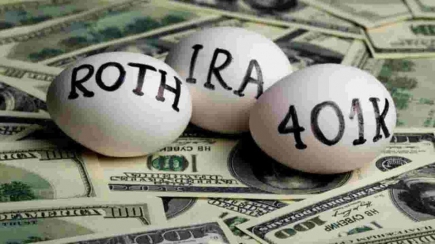IRA charitable donations are an alternative to taxable required distributions
Are you charitably minded and have a significant amount of money in an IRA? If you’re age 70½ or older, and don’t need the money from required minimum distributions, you may benefit by giving these amounts to charity.
IRA distribution basics
A popular way to transfer IRA assets to charity is through a tax provision that allows IRA owners who are 70½ or older to give up to $100,000 per year of their IRA distributions to charity. These distributions are called qualified charitable distributions, or QCDs. The money given to charity counts toward the donor’s required minimum distributions (RMDs), but doesn’t increase the donor’s adjusted gross income or generate a tax bill.
So while QCDs are exempt from federal income taxes, other traditional IRA distributions are taxable (either wholly or partially depending on whether you’ve made any nondeductible contributions over the years).
Unlike regular charitable donations, QCDs can’t be claimed as itemized deductions.
Keeping the donation out of your AGI may be important because doing so can:
- Help the donor qualify for other tax breaks (for example, a lower AGI can reduce the threshold for deducting medical expenses, which are only deductible to the extent they exceed 10% of AGI);
- Reduce taxes on your Social Security benefits; and
- Help you avoid a high-income surcharge for Medicare Part B and Part D premiums, (which kicks in if AGI hits certain levels).
In addition, keep in mind that charitable contributions don’t yield a tax benefit for those individuals who no longer itemize their deductions (because of the larger standard deduction under the Tax Cuts and Jobs Act). So those who are age 70½ or older and are receiving RMDs from IRAs may gain a tax advantage by making annual charitable contributions via a QCD from an IRA. This charitable contribution will reduce RMDs by a commensurate amount, and the amount of the reduction will be tax-free.
Annual limit
There’s a $100,000 limit on total QCDs for any one year. But if you and your spouse both have IRAs set up in your respective names, each of you is entitled to a separate $100,000 annual QCD limit, for a combined total of $200,000.
Plan ahead
The QCD strategy can be a smart tax move for high-net-worth individuals over 70½ years old. If you’re interested in this opportunity, don’t wait until year end to act. Contact us for more information.
© 2019
Traditional and Roth IRAs can be powerful estate planning tools. With a “self-directed” IRA, you may be able to amp up the benefits of these tools by enabling them to hold nontraditional investments that offer potentially greater returns. However, self-directed IRAs present pitfalls that can lead to unfavorable tax consequences. Consequently, you need to handle these vehicles with care.
Estate planning benefits
IRAs are designed primarily as retirement-saving tools, but if you don’t need the funds for retirement, they can provide a tax-advantaged source of wealth for your family. For example, if you name your spouse as beneficiary, your spouse can roll the funds over into his or her own IRA after you die, enabling the funds to continue growing on a tax-deferred basis.
If you name someone other than your spouse as beneficiary, that person will have to begin taking distributions.
Advantages of self-directed IRAs
A self-directed IRA is simply an IRA that gives you complete control over investment decisions. Traditional IRAs typically offer a selection of stocks, bonds and mutual funds. Self-directed IRAs (available at certain financial institutions) offer greater diversification and potentially higher returns by permitting you to select virtually any type of investment.
Self-directed IRAs offer the same estate planning benefits as traditional IRAs, but they allow you to transfer many types of assets to your heirs in a tax-advantaged manner. Self-directed Roth IRAs are particularly powerful estate planning tools, because they offer tax-free investment growth.
Avoiding the pitfalls
To avoid pitfalls that can lead to unwanted tax consequences, caution is required when using self-directed IRAs. The most dangerous traps are the prohibited transaction rules. These rules are designed to limit dealings between an IRA and “disqualified persons,” including account holders, certain members of account holders’ families, and businesses controlled by account holders or their families.
Among other things, disqualified persons may not sell property or lend money to the IRA, buy property from the IRA, provide goods or services to the IRA, guarantee a loan to the IRA, pledge IRA assets as security for a loan, receive compensation from the IRA or personally use IRA assets.
The penalty for engaging in a prohibited transaction is severe: The IRA is disqualified and all of its assets are deemed to have been distributed on the first day of the year in which the transaction takes place, subject to income taxes and, potentially, penalties. This makes it virtually impossible to manage a business, real estate or other investments held in a self-directed IRA. So, unless you’re prepared to accept a purely passive role with respect to the IRA’s assets, this strategy isn’t for you.
Proceed with caution
If you’re considering a self-directed IRA, contact us to determine whether this vehicle is right for you. Consider the types of assets in which you’d like to invest and carefully weigh the potential benefits against the risks.
© 2019
Taking distributions from your traditional IRA
If you’re like many people, you’ve worked hard to accumulate a large nest egg in your traditional IRA (including a SEP-IRA). It’s even more critical to carefully plan for withdrawals from these retirement-savings vehicles.
Knowing the fine points of the IRA distribution rules can make a significant difference in how much you and your family will get to keep after taxes. Here are three IRA areas to understand:
- Taking early distributions. If you need to take money out of your traditional IRA before age 59½, any distribution to you will be generally taxable (unless nondeductible contributions were made, in which case part of each payout will be tax-free). In addition, distributions before age 59½ may be subject to a 10% penalty tax. However, there are several ways that the penalty tax (but not the regular income tax) can be avoided. These exceptions include paying for unreimbursed medical expenses, paying for qualified educational expenses and buying a first home (up to $10,000).
- Naming your beneficiary (or beneficiaries). This decision affects the minimum amounts you must withdraw from the IRA when you reach age 70½; who will get what remains in the account at your death; and how that IRA balance can be paid out. What’s more, a periodic review of the individuals you’ve named as IRA beneficiaries is critical to assure that your overall estate planning objectives will be achieved. Review them when circumstances change in your personal life, finances and family.
- Taking required distributions. Once you reach age 70½, distributions from your traditional IRAs must begin. It doesn’t matter if you haven’t retired. If you don’t withdraw the minimum amount each year, you may have to pay a 50% penalty tax on what should have been taken — but wasn’t. In planning for required minimum distributions, your income needs must be weighed against the desirable goal of keeping the tax shelter of the IRA going for as long as possible for both yourself and your beneficiaries.
Keep more of your money
Prudently planning how to take money out of your traditional IRA can mean more money for you and your heirs. Keep in mind that Roth IRAs operate under a different set of rules than traditional IRAs. Contact us to review your traditional and Roth IRAs, and to analyze other aspects of your retirement planning.
© 2019
Make a deductible IRA contribution for 2018. It’s not too late!
Do you want to save more for retirement on a tax-favored basis? If so, and if you qualify, you can make a deductible traditional IRA contribution for the 2018 tax year between now and the tax filing deadline and claim the write-off on your 2018 return. Or you can contribute to a Roth IRA and avoid paying taxes on future withdrawals.
You can potentially make a contribution of up to $5,500 (or $6,500 if you were age 50 or older as of December 31, 2018). If you’re married, your spouse can potentially do the same, thereby doubling your tax benefits.
The deadline for 2018 traditional and Roth contributions for most taxpayers is April 15, 2019 (April 17 for those in Maine and Massachusetts).
There are some ground rules. You must have enough 2018 earned income (from jobs, self-employment or alimony) to equal or exceed your IRA contributions for the tax year. If you’re married, either spouse can provide the necessary earned income. And you can’t make a deductible contribution to a traditional IRA if you were 70½ or older as of December 31, 2018. (But you can make one to a Roth IRA after that age.)
Finally, deductible IRA contributions are phased out (reduced or eliminated) if last year’s modified adjusted gross income (MAGI) is too high.
Types of contributions
If you haven’t already maxed out your 2018 IRA contribution limit, consider making one of these three types of contributions by the April deadline:
- Deductible traditional.With traditional IRAs, account growth is tax-deferred and distributions are subject to income tax. If you and your spousedon’t participate in an employer-sponsored plan such as a 401(k), the contribution is fully deductible on your 2018 tax return. If you or your spouse doparticipate in an employer-sponsored plan, your deduction is subject to the following MAGI phaseout:
- For married taxpayers filing jointly, the phaseout range is specific to each spouse based on whether he or she is a participant in an employer-sponsored plan:
- For a spouse who participated in 2018: $101,000–$121,000.
- For a spouse who didn’t participate in 2018: $189,000–$199,000.
- For single and head-of-household taxpayers participating in an employer-sponsored plan: $63,000–$73,000.
Taxpayers with MAGIs within the applicable range can deduct a partial contribution. But those with MAGIs exceeding the applicable range can’t deduct any IRA contribution.
- Roth.Roth IRA contributions aren’t deductible, but qualified distributions — including growth — are tax-free, if you satisfy certain requirements.
Your ability to contribute, however, is subject to a MAGI-based phaseout:
- For married taxpayers filing jointly: $189,000–$199,000.
- For single and head-of-household taxpayers: $120,000–$135,000.
You can make a partial contribution if your 2018 MAGI is within the applicable range, but no contribution if it exceeds the top of the range.
- Nondeductible traditional.If your income is too high for you to fully benefit from a deductible traditional or a Roth contribution, you may benefit from anondeductible contribution to a traditional IRA. The account can still grow tax-deferred, and when you take qualified distributions, you’ll only be taxed on the growth.
Act fast
Traditional and Roth IRAs provide a powerful way to save for retirement on a tax-advantaged basis. Contact us to learn more about making 2018 contributions and making the most of IRAs in 2019 and beyond.
© 2019

Walls & Associates is a certified public accounting firm serving the needs of businesses and individuals in the tri-state area of West Virginia, Kentucky, and Ohio. We are confident that regardless of size, we can fulfill your financial and tax accounting needs – whether it is a simple individual tax return, a consolidated multi-state corporate tax return, a nonprofit tax return, or general bookkeeping.
CONTACT US
-
Milton Office Location:
Phone: 304-390-5971
1025 N. Main Street
Milton, WV 25541 -
Hamlin Office Location:
Phone: 304-824-3880
19 3rd Street
Hamlin, WV 25523
WORKING HOURS
| Monday | 8:30 am - 5:00 pm |
| Tuesday | 8:30 am - 5:00 pm |
| Wednesday | 8:30 am - 5:00 pm |
| Thursday | 8:30 am - 5:00 pm |
| Friday | 8:30 am - 5:00 pm |
| Saturday | Closed |
| Sunday | Closed |



